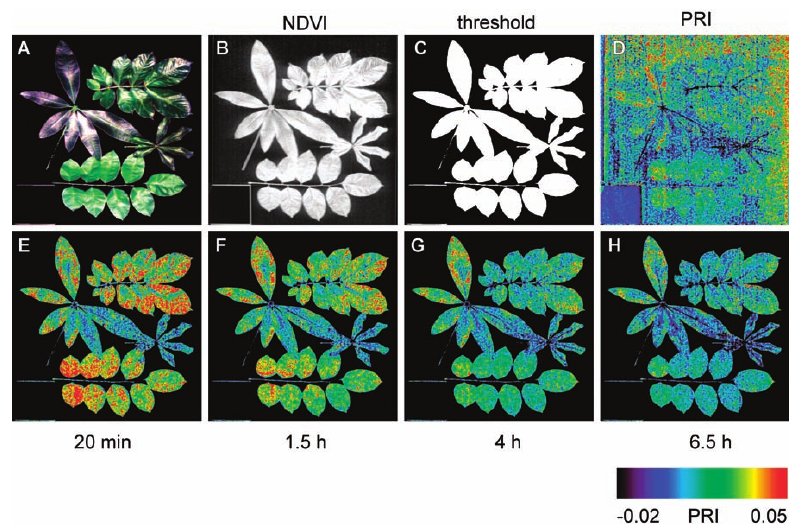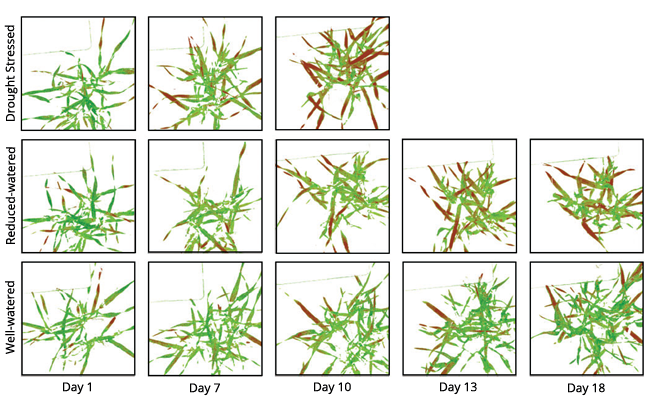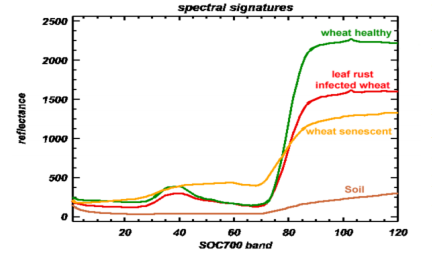Monitoring crops for nutrient deficiencies, water stress, diseases, insect infestations, and overall plant health is a crucial component of successful agricultural management. Traditionally, this has been done through visual inspections, either on the ground or from the air. However, these methods are inherently limited by the human eye’s ability to distinguish between healthy plants and those under stress. Often, specific problems must reach an advanced stage before symptoms become noticeable, even to experienced observers.
Modern precision agriculture addresses these challenges through site-specific management strategies aimed at maximizing yield and resource efficiency while minimizing environmental impacts, such as over-fertilization and widespread pesticide use. By identifying areas that require targeted interventions whether for water management, pest control, or nutrient adjustments farmers can apply treatments precisely, rather than treating entire fields. Achieving this level of precision requires accurate, cost-effective data collection.
Hyperspectral and multispectral imaging technologies have revolutionized this process. Compared to traditional scouting methods, these tools are cost-effective, easy to use, non-destructive, rapid, highly accurate, and versatile. Advances in both aerial and ground-based imaging systems have enabled practical applications of precision agriculture on a larger scale. These technologies allow for early detection of crop stress, soil and vegetation characterization, yield estimation, and even predictive assessments, significantly enhancing decision-making in modern farming.
Read More: DJI Drones in Agriculture: Transforming the Future of Farming
Basics of Hyperspectral Imaging
Spectral reflectance, measured by hyperspectral imaging equipment, represents the amount of light reflected from a surface. Hyperspectral imaging captures images and assigns numerical values (spectral radiance) to each pixel across a broad range of wavelengths in the electromagnetic spectrum, including both visible and infrared regions.

Specialized software and statistical analysis are then used to sort and characterize these pixels, enabling the differentiation of groups of pixels or, in the context of precision agriculture, the identification of plant traits and environmental conditions. Unlike earlier remote sensing technologies particularly multispectral imaging, which collects data at only a few widely spaced wavelengths hyperspectral imaging captures data across hundreds of narrow, contiguous wavelength bands.
The resulting data is organized into a three-dimensional hyperspectral “data cube,” where each layer represents information at a specific wavelength. This structure allows for detailed processing and analysis, providing highly precise insights into plant health, soil conditions, and other agricultural variables.
Detection of Stress-Related Spectral Variations
Hyperspectral imaging provides valuable insights into crop health by analyzing the interaction between electromagnetic radiation (EMR) and plant foliage. EMR may be absorbed, transmitted, or reflected, and while the physical structure of vegetation plays a role, the primary influence on reflectance comes from photosynthetic pigments.
In the visible spectrum, particularly the red and blue regions, reflectance is largely governed by pigment absorption. Water content primarily affects reflectance in the mid-infrared (MIR) region, while the near-infrared (NIR) reflectance is influenced by the shape and condition of air spaces in the spongy mesophyll. Factors such as senescence, nutrient stress, pathogen infection, and insect infestation have been shown to reduce reflectance in the MIR range. Vegetation indices based on NIR and red wavelengths can therefore monitor a variety of plant health issues, including fungal infections, salinity stress, and nutrient deficiencies.
One powerful indicator of overall photosynthetic efficiency—and consequently plant productivity—is chlorophyll a fluorescence in photosystem II. While fluorescence-based indices provide valuable information, they require active excitation of photosynthesis (e.g., via saturating light pulses), which limits their use in remote sensing. This has driven research toward developing new, fully remote indices suitable for hyperspectral imaging.
Reflectance is also influenced by pigments such as zeaxanthin, which plants produce to dissipate excess light energy safely when photosystem II is overloaded. Zeaxanthin accumulation serves as a quantitative indicator of non-photochemical energy dissipation and light-use efficiency. By measuring changes at 531 nm (affected by zeaxanthin) relative to 570 nm (unaffected), the Photochemical Reflectance Index (PRI) was developed to quantify photosynthetic light-use efficiency. This index can be readily generated from hyperspectral imaging data.
Comparisons with traditional spectrometric instruments have confirmed the reliability of hyperspectral imaging. For example, Rascher et al. (2007) used the SOC-700 instrument to demonstrate that portable hyperspectral systems could quantify dynamic biochemical changes in photosynthetic efficiency by measuring PRI.

The study showed that PRI could capture both biochemical adaptations to high light intensity and the gradual deactivation of photosynthesis during drying, making it a valuable tool for drought assessment. While Rascher’s study focused on detached leaves, subsequent experiments under controlled conditions in Biosphere 2 demonstrated that this methodology is effective for whole vegetation canopies as well.
Drought Stress
Drought is a major factor affecting crop yield and overall agricultural success. Early detection of water-related stress allows producers to target irrigation efficiently, conserving water, energy, and time while preventing potential yield losses.
Colombo et al. (2008) demonstrated that leaf reflectance in the visible and infrared spectrum is closely related to changes in leaf equivalent water thickness (EWT). Using hyperspectral imaging, they developed models to estimate EWT at the canopy level in Italian poplar plantations, achieving error rates as low as 2.6%. These findings highlighted hyperspectral regression indices as reliable tools for assessing water content at both leaf and landscape scales.
As drought stress progresses, changes in photosynthetic pigments occur, eventually leading to chlorosis, where red and green reflectance converge to produce yellowing leaves. Hyperspectral imaging detects these changes well before they become visible to the human eye. Rascher et al. used the Photochemical Reflectance Index (PRI) with a portable hyperspectral imager to track dehydration in tropical tree leaves over time, illustrating the potential for early drought detection.
Field trials in crops such as corn and barley have confirmed the practical applications of this technology. Even subtle differences in leaf and canopy water stress could be distinguished under both controlled and variable field conditions. For instance, the SOC-700 hyperspectral imager detected water stress in barley up to four days before visible symptoms appeared. Rossini et al. (2013) further demonstrated that airborne hyperspectral imaging could map irrigation deficits in corn fields before canopy structure was affected.

Hyperspectral imaging is also valuable beyond field crops. Jiang and Carrow (2005) showed that spectral reflectance could assess drought stress and inform irrigation schedules in turf grasses. Their study highlighted cultivar-specific variations in spectral response, emphasizing the need to account for species differences when applying drought indices. This demonstrates the broad applicability of hyperspectral imaging in both crop management and turfgrass irrigation planning.
Plant Pathogens
Fungal pathogens are responsible for significant global losses in crop yield and quality. In the United States alone, plant diseases cause an estimated $33 billion in economic damage annually. Early detection of these diseases is critical, enabling producers to quickly treat affected areas and more accurately predict potential yield losses. Traditional detection methods rely on scouting and visual inspection, which often identify problems only after the optimal intervention window has passed.
Beyond reducing individual losses, early detection helps prevent the spread of pathogens to neighboring fields. Hyperspectral and multispectral imaging can aid in disease management by detecting changes in leaf pigments, structure, and moisture content, allowing for detailed mapping of affected areas.
For example, Puccinia recondita, the causal agent of wheat rust, produces small brown pustules on leaf surfaces. In a greenhouse study, wheat plants were inoculated, and hyperspectral and multispectral imaging were compared for accuracy in distinguishing infected from non-infected plants. Franke et al. (2005) reported that both methods could detect leaf rust as early as five days post-inoculation. Spectral analysis from 400–1000 nm showed reduced reflectance in the blue and green regions and a pronounced drop in near-infrared reflectance in infected leaves. Hyperspectral imaging, with its higher spectral sensitivity, detected infections at an earlier stage than multispectral imaging and was less affected by external factors like illumination, resulting in more reliable classification.

Venturia inaequalis, responsible for apple scab, initially causes yellow spots on leaves, progressing to darker lesions and yellowing, primarily affecting fruit quality. Using hyperspectral imaging and statistical classification, Delalieux et al. (2007) demonstrated that apple scab stress could be detected before visible symptoms appeared.
Under controlled conditions, Mahlein et al. (2012) showed that hyperspectral imaging could detect, identify, and quantify fungal diseases in sugar beet leaves, including Cercospora leaf spot (Cercospora beticola), powdery mildew (Erysiphe betae), and sugar beet rust (Uromyces betae), even when disease coverage was as low as 10% of the leaf area.
Hyperspectral imaging is also effective for field-level applications. For instance, Apan et al. (2004) successfully discriminated orange rust of sugarcane (Puccinia kuehnii) by detecting pigment changes, while Zhang et al. (2003) demonstrated early detection of late blight in tomatoes (Phytophthora infestans) using spectral bands between 0.7–0.9 µm. These studies highlight the potential of hyperspectral imaging for large-scale, precise disease monitoring in agricultural crops.
Ecological Monitoring
Building on the verification of the Photochemical Reflectance Index (PRI) for whole canopies, research has highlighted limitations in current ecological monitoring systems, particularly in measuring global carbon utilization. While existing models can accurately capture overall light intensity in the 400–700 nm range and the fraction of light absorbed by vegetation, they lack precise measurements of light-use efficiency. Without this critical data, global carbon models carry significant uncertainties, limiting their predictive value.
The integration of PRI with hyperspectral imaging offers a novel solution, providing accurate, large-scale measurements of canopy-level light-use efficiency. This methodology enables more reliable assessments of photosynthetic performance across extensive agricultural landscapes, translating into improved estimates of land productivity and crop yield. Such insights are invaluable for monitoring food production potential and informing sustainable agricultural practices on a global scale.
Nutrient Stress
Nutrient stress in plants whether caused by deficiencies or soil contamination produces measurable symptoms that can be detected using hyperspectral or multispectral imaging. This technology allows for rapid, non-destructive assessment of plant health and soil conditions.
For example, Schuerger et al. (2002) used hyperspectral imaging to measure zinc deficiency and toxicity in Bahia grass by correlating plant chlorophyll levels with stress symptoms. They noted that this approach could map contaminated sites at a significantly lower cost than traditional direct soil sampling methods. Similarly, Dunagan et al. (2006) demonstrated that hyperspectral reflectance values in mustard plants were strongly correlated with mercury contamination levels.
Beyond contamination assessment, hyperspectral imaging can identify nutrient-poor areas within crop fields, enabling precise, targeted fertilizer application. Nitrogen and phosphorus are often the primary yield-limiting nutrients in non-leguminous crops in the Midwestern United States. Osborne et al.
(2002) demonstrated that hyperspectral imaging could estimate nitrogen and phosphorus concentrations, as well as biomass and yield under nutrient stress conditions. A key insight from this study was the critical importance of imaging timing to ensure accurate yield estimations.
Analysis of Soil Properties
Hyperspectral and multispectral imaging also enables detailed analysis and mapping of soil characteristics, enhancing the precision and effectiveness of modern agricultural practices. By providing spatially explicit information about soil properties, these technologies support more informed management decisions.
For example, researchers in Israel demonstrated that hyperspectral sensors could determine key soil properties even beneath vegetation. Ben-Dor et al. (2000) successfully mapped soil organic matter, moisture content, and salinity at the field scale. Similarly, Rossel and Bratney (2008) accurately predicted soil organic carbon in an Australian case study, while Farifteh et al.
(2007) applied hyperspectral imaging to map soil salinity across multiple locations in Europe. These studies highlight the capability of hyperspectral technology to deliver precise, large-scale soil property assessments, which are critical for optimizing crop management and improving resource efficiency.
Frequently Asked Questions
What is hyperspectral imaging?
Hyperspectral imaging is a technology that captures images across hundreds of narrow, contiguous wavelengths of the electromagnetic spectrum. Each pixel contains detailed spectral information, allowing precise analysis of plant, soil, and environmental conditions.
How is hyperspectral imaging used in crop monitoring?
It can detect nutrient deficiencies, water stress, diseases, insect damage, and overall plant health by analyzing reflectance patterns that are invisible to the human eye. This enables early intervention and site-specific management.
How does hyperspectral imaging compare to multispectral imaging?
Multispectral imaging captures data at a few discrete wavelengths, whereas hyperspectral imaging captures hundreds of continuous bands, providing higher spectral sensitivity. This allows for earlier and more accurate detection of stress, disease, or nutrient deficiencies.
Can hyperspectral imaging detect plant diseases?
Yes. Hyperspectral imaging can detect fungal pathogens, bacterial infections, and other plant diseases before visible symptoms appear. Examples include wheat rust, apple scab, sugar beet diseases, and tomato late blight.
Can hyperspectral imaging identify nutrient stress?
Yes. It can detect deficiencies in nitrogen, phosphorus, and other nutrients, as well as heavy metal contamination such as zinc or mercury. This helps target fertilization and soil remediation efforts.
How does hyperspectral imaging help in soil analysis?
It allows mapping of soil properties such as organic matter, moisture, and salinity, even under vegetation cover. This supports precision agriculture practices like targeted fertilization and irrigation.
What is the Photochemical Reflectance Index (PRI)?
PRI is an index derived from hyperspectral data that measures photosynthetic light-use efficiency. It is useful for monitoring plant productivity, drought stress, and global carbon utilization at canopy and landscape scales.
Conclusion
Hyperspectral imaging has emerged as a powerful tool for modern precision agriculture, providing detailed, non-destructive insights into crop health, nutrient status, disease presence, and soil properties. By capturing data across a wide range of wavelengths, this technology enables early detection of stress factors that are often invisible to the human eye, allowing for timely and targeted interventions. The applications of hyperspectral imaging extend from leaf-level analysis to field-scale monitoring, supporting site-specific management strategies that improve yield, optimize resource use, and reduce environmental impacts.

